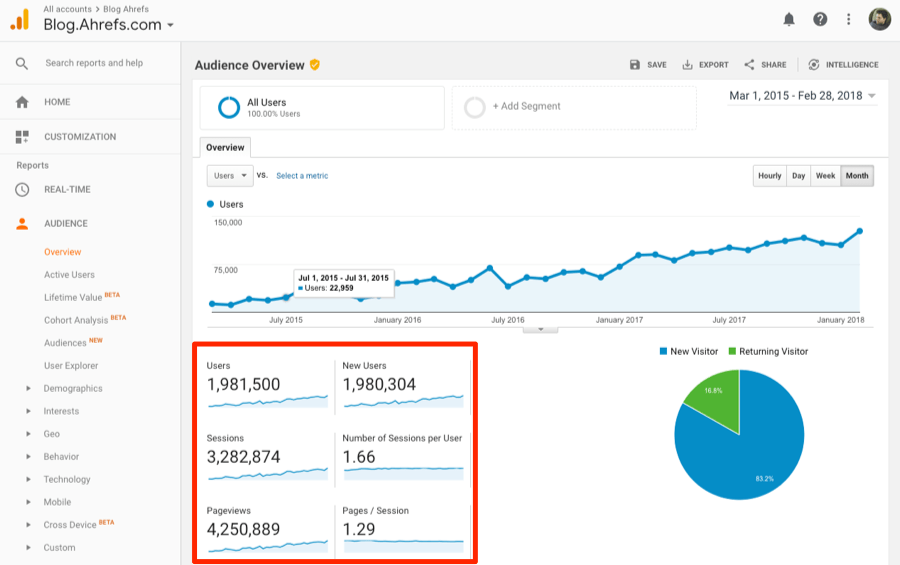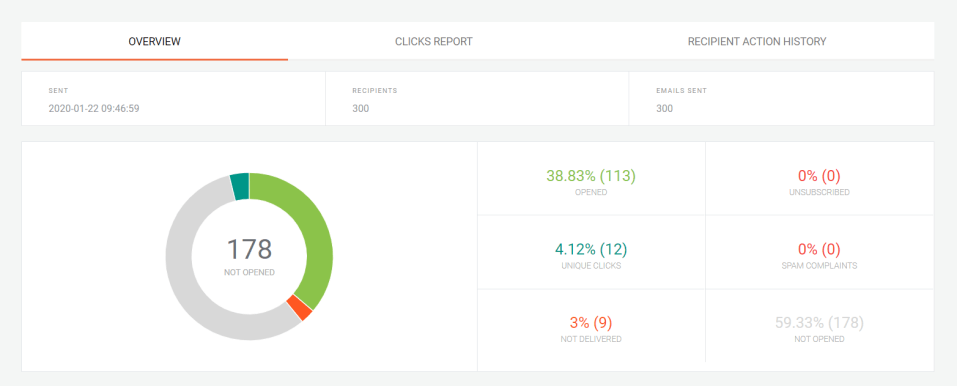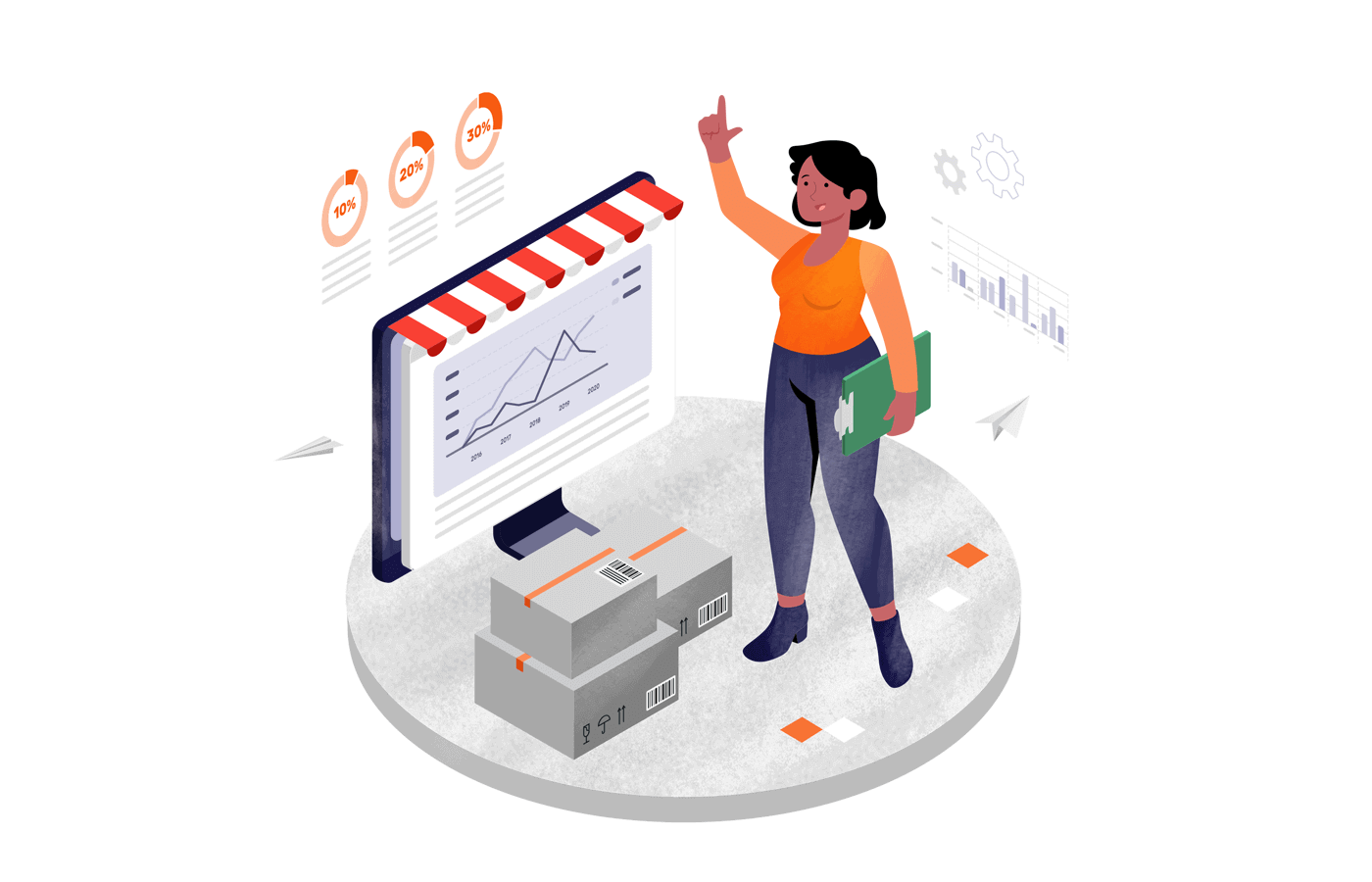Are you looking for crucial ecommerce metrics to track in 2023? This blog post covers the top 14 ecommerce list of metrics that you need to be tracking to ensure your business is successful.
From conversion measurement to average order value, learn about the ecommerce metrics that matter. These metrics examples will help you benchmark your progress and identify areas of improvement.
To rule over this eCommerce world, you have to find out the metrics that matter and be able to track them to find out how your business is doing.
In this post, we take a look at the top list of ecommerce metrics that you need to track in 2023.
14 Important Ecommerce Metrics You Should Be Tracking
Here are the most important metrics you need to track if you want your business to succeed.
1. Sales Conversion Rate
The sales conversion rate is one of the most important ecommerce metrics you can track.
By tracking your typical sales conversion rate, you can determine how well your store is performing in terms of converting visitors into paying customers.
A good conversion rate for ecommerce indicates that your sales process is efficient. By tracking your sales conversion rate over time, you can also identify trends and make changes to improve your conversion rate.
A conversion rate is the percentage of visitors to a website who take a desired action, such as making a purchase or signing up for a newsletter.
The desired action is known as a conversion, and the rate is calculated by dividing the number of conversions by the number of visitors. For example, if a website receives 100 visitors in a day and 10 of them make a purchase, the conversion rate would be 10%.
There are a number of different factors that can affect your sales conversion rate, so it’s essential to track this metric on a regular basis and make changes to your store as needed.
2. Website Traffic
There are a number of important ecommerce statistics that you should be tracking, and website traffic is one of them.
Website traffic can give you a good indication of how well your site is performing and how popular it is with potential customers.
This is why it’s one of the factors that should receive the maximum observability, as it can help plan better for user experience on the website. Simply speaking, as website traffic is determined by the content and interface, observing this metric will prove vital in the long run.
By tracking website traffic, you can make sure that your site is getting the exposure it needs and that potential customers are finding it easily.

3. Email Marketing Metrics
By tracking email marketing metrics, you can determine the effectiveness of your ecommerce email marketing campaigns and make necessary adjustments to improve your results.
There are a number of email marketing metrics you can track, such as open rate, click-through rate, unsubscribe rate, and conversion rate.
Detailed, real-time analytics and heatmap is the feature people at Sender are proud of. You can easily track the results of your email and SMS campaigns, which lets you adjust your strategies accordingly.


By tracking these metrics, you can get a better understanding of what works and what doesn’t work in your email campaigns. By making the necessary adjustments, you can improve your results and ROI from email marketing.
4. Average Customer Acquisition Cost
Average customer acquisition cost (CAC) is one of the most important ecommerce metrics you should track. CAC measures how much it costs your business to acquire a new customer.
This metric is important because it can help you determine whether your marketing and sales efforts are efficient and effective.
If your CAC is too high, it means that you’re spending too much to acquire new customers, and you need to find ways to reduce your costs.
Customer Acquisition Cost = (Expenses incurred in attracting, engaging, and converting a new customer)/ (Number of New Customers acquired)
5. Average Order Value (AOV)
AOV measures the average value of an order placed on your website. This metric is important because it can give you insights into the average spending of your customers and help you to make strategic decisions about your pricing and product mix.
Tracking your AOV is a key part of managing your ecommerce business. By understanding your customers’ spending habits, you can make strategic decisions to grow your online sales.
There are a few things you can do to increase your AOV. First, you can offer discounts and promotions to encourage customers to spend more.
You can also upsell and cross-sell products to boost the value of each order. Finally, you can focus on selling higher-priced items on your website.
Tracking your AOV is a key part of managing your ecommerce marketing business. By understanding your customers’ spending habits, you can make strategic decisions to grow your online sales.
Average Order Value (AOV) = Total revenue/Number of orders taken
6. Customer Lifetime Value (CLV)
Customer lifetime value represents the total value of a customer to your business over the entire course of their relationship with you.
This includes both the monetary value of their purchases and the value of any other interactions they have with your brand (such as customer service interactions, social media interactions, etc).
CLV is one of the important funnel metrics because it allows you to see not only the immediate value of a customer but also the potential long-term value of a customer.
This information can be used to make strategic decisions about best investing in acquiring and retaining customers.
Customer lifetime value (CLV) = Customer Value X Average Customer Lifespan
7. Repeat Purchase Rate Ecommerce
The repeat purchase rate ecommerce metric is one of the most important indicators of the success of your online store. This metric measures the percentage of customers who make a second purchase from your store.
A repeat purchase rate in ecom indicates that your customers are satisfied with your products and are coming back to buy more.
Tracking this metric can help you identify which products are popular with your customers and which ones need improvement.
Repeat Purchase Rate = Number of customers who have shopped more than once/Number of customers
8. Customer Acquisition Costs
As an ecommerce business owner, it’s important to track all of the key metrics that will impact the performance of your business. One of those key metrics is your customer acquisition cost (CAC).
Your CAC is the average amount of money that you spend to acquire a new customer.
Knowing your CAC is important because it allows you to track your return on investment (ROI) for your marketing and sales efforts.
Customer Acquisition Cost (CAC) = Total marketing expenses/Total sales expenses
If your CAC is higher than your average customer lifetime value (CLV), then you’re likely losing money on each new customer that you acquire.
There are a number of ways to reduce your CAC, including improving your marketing campaigns, optimizing your sales process, and offering discounts or coupons.
By reducing your CAC, you can improve your chances of achieving long-term profitability and success rate for your ecommerce business.
9. Shopping Cart Abandonment Rate
The shopping cart abandonment rate measures the percentage of visitors to your website who add items to their shopping cart but then leave without completing the purchase.
There are a number of reasons why shoppers may abandon their carts, including high shipping costs, unexpected fees, or simply because they were not ready to make a purchase.
Whatever the reason, it’s important to track this metric to identify areas where your website loses sales.
Cart Abandonment Rate = 1 – (Transactions completed/Transactions started) X 100
There are a few ways to reduce your shopping cart abandonment rate, such as offering free shipping, providing a discount for completing the purchase, or making the checkout process simpler and more user-friendly.
By tracking this metric and making changes to your website accordingly, you can help to increase sales and boost customer engagement.
10. Returning Customer Rate
As an online retailer, it’s important to track a variety of metrics in order to gauge the success of your business. One of the most important metrics is your returning customer rate.
This metric measures the percentage of customers who make a purchase from your store and then come back to make another purchase at a later date.
Returning Customer Rate = Number of customers who purchased more than once/Number of customers
There are a number of ways to increase your returning customer rate. First, you must ensure that you’re providing a great customer experience.
This includes offering quality products, providing fast and friendly customer service, and offering competitive prices.
Secondly, you need to make it easy for customers to find and purchase your products. This means having a user-friendly website and ensuring your products are listed in popular online marketplaces.
By tracking your returning customer rate and taking steps to increase it, you can ensure that your business is on the right track to success, and your Average Revenue Per User (ARPU) will also increase.
Also read: What Is a Repeat Customer? Definition, Formulas & Rates
11. Ecommerce Bounce Rate
A high ecommerce bounce rate indicates that your online store is not providing a good user experience and that visitors are leaving your site without taking any action.
A high bounce rate (70% or higher) indicates something wrong with your website or your visitor’s experience. A low bounce rate (30% or lower) indicates that visitors find what they’re looking for on your website and are engaged with your content.
You can improve your ecommerce bounce rate by optimizing your website design, improving your product pages, and providing more relevant and targeted content.
12. Click-Through Rate
Click-through rate (CTR) is a key ecommerce metric that measures how often people who see your ad or listing click through to your website or the product page.
To calculate CTR, divide the number of people who click on your ad or link by the number of people who see it. For example, if 100 people see your ad and 10 of them click on it, your CTR is 10%.
CTR = Clicks/Impressions X 100
A high CTR indicates that your ad or listing is relevant and engaging to your target audience and is a good indicator of future sales. CTR is also a key factor in determining your ad or listing’s position in search engine results pages (SERPs).
13. Average Session Duration
By understanding how long your customers spend on your site, you can optimize their experience to ensure they’re finding what they need and spending more time on your site.
Additionally, longer session durations generally indicate happier customers, so it’s important to track the Average session duration metric to ensure your customers are satisfied.
There are a few different ways to calculate average session duration. One is to take the total number of minutes spent on your site and divide it by the number of sessions. Another is to take the total number of pageviews and divide it by the number of sessions.
14. Product Impressions
The product impressions metric gives you an idea of how often your product is being seen by potential customers.
If your product impressions are high, it means that your product is being seen by many people and has the potential to generate a lot of sales.
However, if your product impressions are low, it could mean that your product is not being seen by enough people and is not generating enough interest. Tracking this metric is essential to understanding the success of your ecommerce business.
Now, while website traffic may be an important factor in mapping users’ experience, an e-commerce company should ideally engage in the practice of observability for all the above metrics, as all these factors will collectively contribute towards its website success.
Final Words on Crucial Ecommerce Metrics
In the last few years, the ecommerce landscape has changed dramatically. With more and more people shopping online, there are countless new and innovative ways to optimize your ecommerce store.
How you run your business is also changing — and it’s becoming increasingly important to manage your ecommerce metrics and track the progress of your business.
Ecommerce Metrics FAQs
What is the Typical Conversion Rate for E-commerce?
Typical conversion rates for ecommerce are around 2.5-3%.
What is the ideal bounce rate for an ecommerce site?
The Ideal bounce rate for an ecommerce site is between 20% and 45%.
Author Bio
Srushti Shah is an ambitious, passionate, and out-of-the-box thinking woman having a vast exposure in Digital Marketing. Her key focus is to serve her clients with the latest innovation in her field, leading to fast and effective results. Working beyond expectations and delivering the best possible results in her professional motto. Besides work, she loves traveling, exploring new things, and spending quality time with family. Reach out to Srushti Shah on Twitter or LinkedIn.
